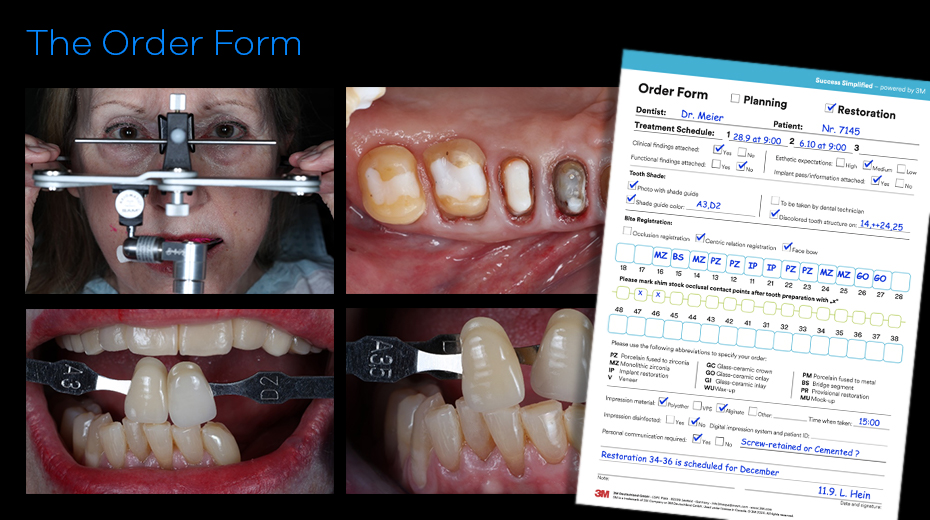The Lab Order Form - Tutorial
“If we don’t plan, we plan for failure. 90% of all failures start before the work begins.” Dr. Peter Dawson
A single patient may have a rare implant and a malfunction with balance contacts without canine guidance with a devitalized anterior tooth for which a complete all-ceramic restoration is desired and he or she might also have an allergy. For such patients, it is important that the dental technician receives the following information:
- Functional analysis
- Implant passport
- Photos of tooth status incl. degree of discoloration
- Allergy-related material recommendation
Often, however, the delivery date of the definitive restoration is the only legible information the laboratory receives. In the event that the order document is not completely filled out, dental technicians have learned to read between the lines for on-time delivery of the order.
Then, when the finished restoration is delivered to the office on time, the office gets just as little information. The dentist looks at the medical device and begins to read between the lines as well. Do I have to etch? For how long? Or do I have to sandblast? What material was used? Such information can often only be obtained after a considerable time delay.
A repetition of work steps or a new production is usually due to insufficient planning as well as incomplete information and documentation of the order forms.
In this tutorial by MDT Otto Prandtner, you will learn how to close communication gaps and thus avoid time-consuming and costly remakes.

